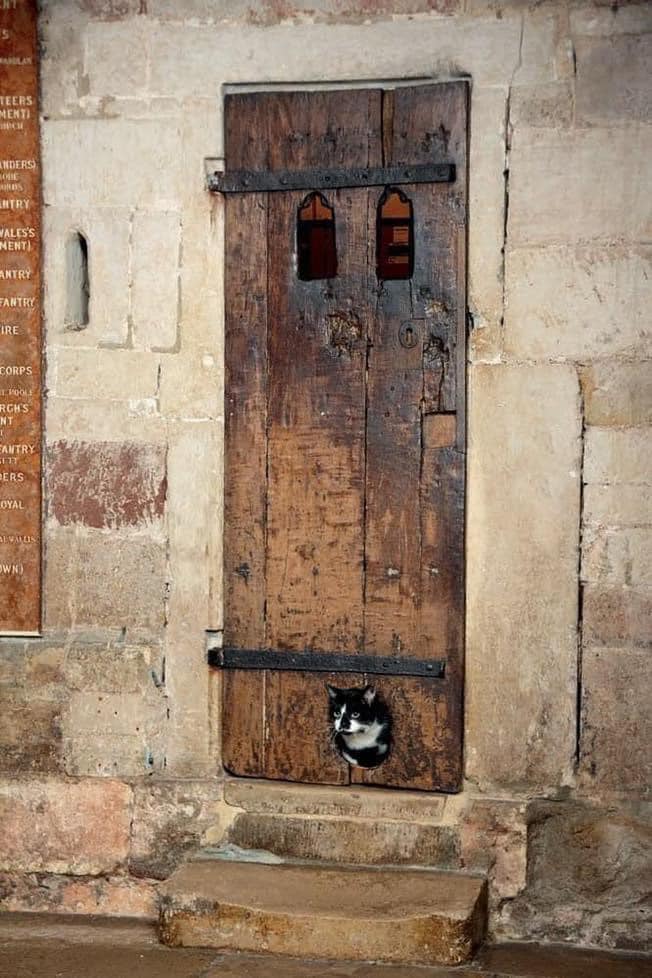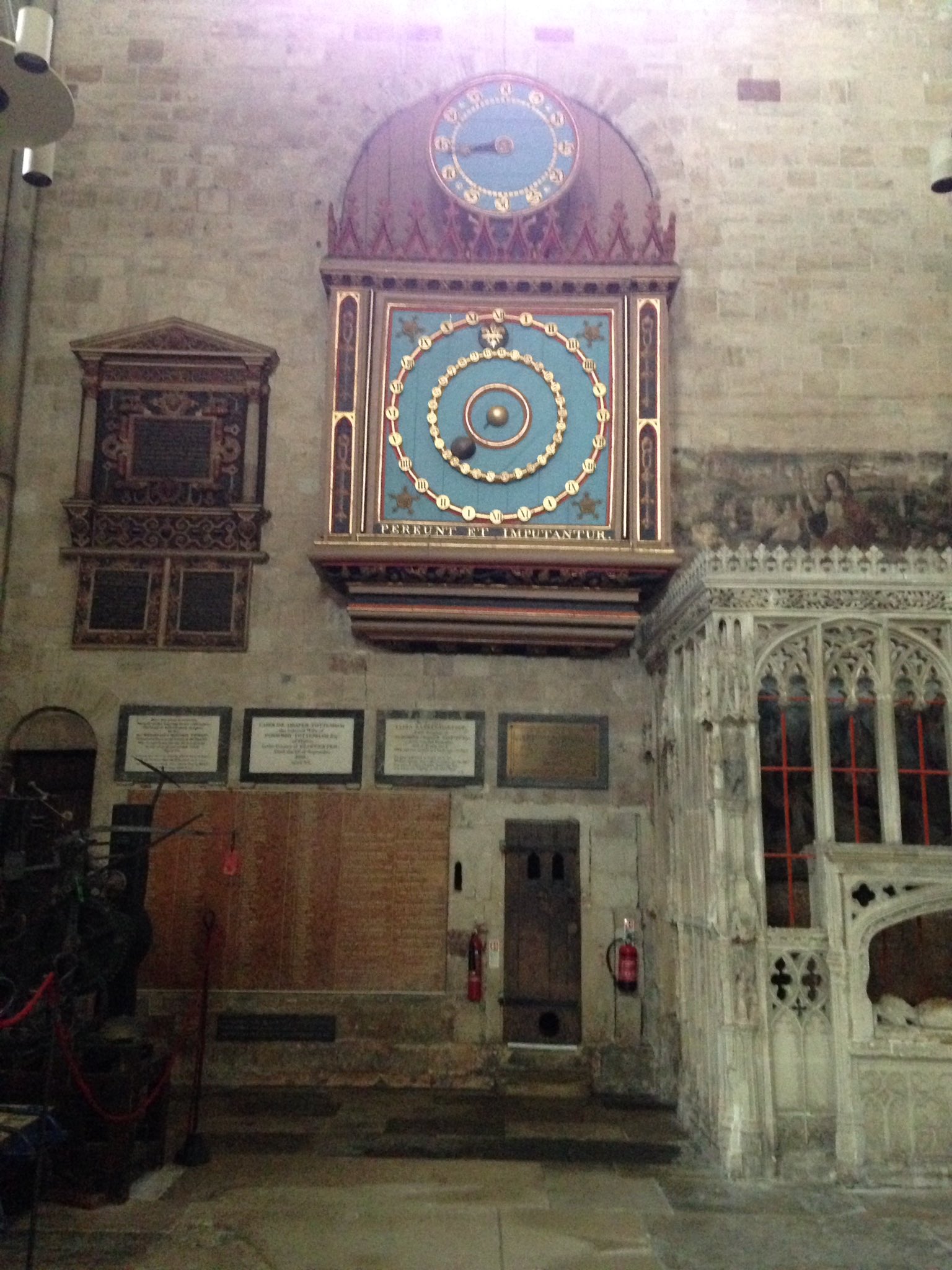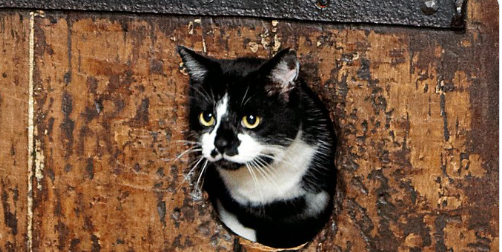This 14th century door at Exeter Cathedral, UK, is thought to be the oldest existing cat flap.
Deep within the historical walls of Exeter Cathedral, UK, lies a door that carries a fascinating tale. Dating back to the 14th century, this humble door holds a special distinction – it is believed to be the oldest existing cat flap in the world.
Exeter Cathedral, renowned for its architectural beauty and spiritual significance, has been a place of worship and contemplation for centuries. However, amidst its grandeur, a unique tradition emerged, involving a feline guardian tasked with a crucial duty.
In the medieval era, the presence of rats and mice was a common nuisance, particularly in the north tower of the cathedral. To combat this pest problem, the ingenious solution was to employ a skilled hunter: a cat. The cathedral authorities recognized the importance of this feline companion and devised a system to ensure its diligent service.
A small opening, known as a cat flap, was carefully cut into the door beneath the cathedral’s magnificent astronomical clock. This ingenious addition allowed the cat to come and go freely, patrolling the tower and keeping the rodent population under control. The cat flap served as a practical solution, enabling the feline guardian to carry out its vital duties without constant human intervention.
Remarkably, historical records from the Cathedral archives reveal the significant role played by this esteemed cat. From 1305 to 1467, meticulous entries documented weekly payments made to the cat, amounting to a penny each week. This modest sum served as a wage to compensate the feline worker and provide for its sustenance. With this income, the cat’s caretakers could ensure a nourishing diet for their vigilant protector, supplementing its meals with food purchased using the weekly payment.
Through the centuries, this cat flap witnessed the comings and goings of countless feline sentinels, diligently safeguarding the north tower from the incessant threat of rodents. The cat’s presence not only helped maintain the cleanliness of the cathedral but also became an integral part of its unique folklore.
Today, visitors to Exeter Cathedral can marvel at this ancient door and its extraordinary cat flap, which stands as a testament to the resourcefulness and ingenuity of the past. It serves as a tangible reminder of the creative solutions devised by our ancestors to address practical challenges in unexpected ways.
As we contemplate the historic significance of this 14th-century door, we are reminded of the enduring bond between humans and animals, where even a humble cat can leave an indelible mark on the pages of history. The cat flap at Exeter Cathedral stands as a charming testament to the harmonious coexistence of humans and their feline companions, united in the pursuit of shared goals and the preservation of treasured spaces.
Hits: 0





